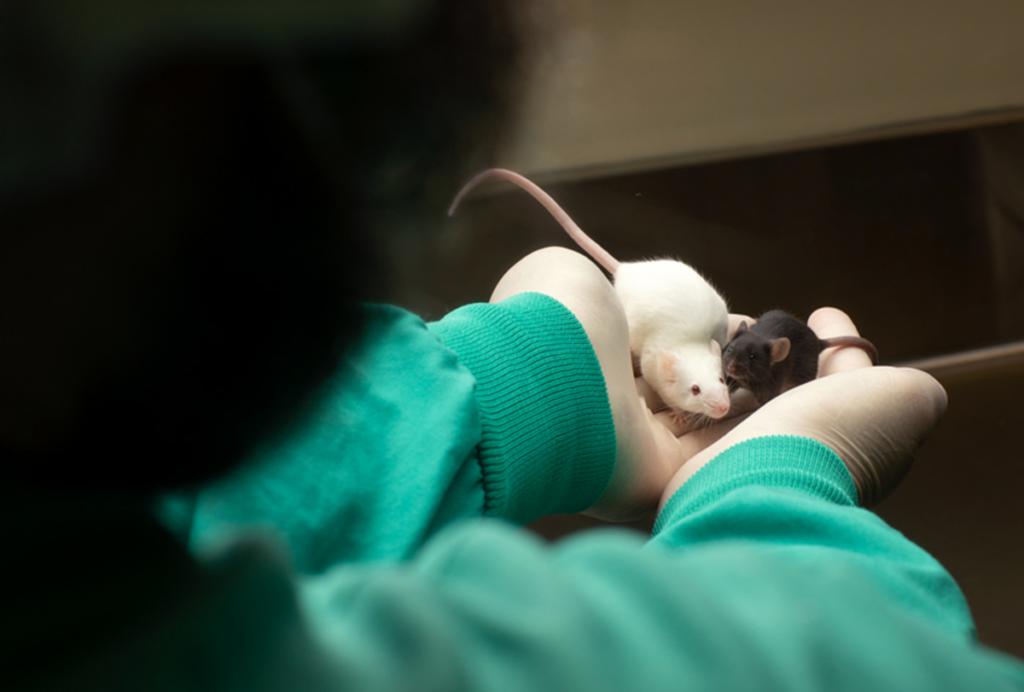
What U.S. science stands to lose without international graduate students and postdoctoral researchers
Neuroscience in other countries will strengthen—at the United States’ expense—as rising visa restrictions and rejections block many international students from enrolling at U.S. institutions and dissuade others from applying.
Most, if not all, readers of The Transmitter know that biomedical research in the United States is under attack. Multiple factors are contributing to what is likely to be a major decline in our standing in the world over the next few years. The most obvious is the decrease in federal support. Billions of dollars in approved grants have already been paused or terminated, with no relief on the horizon: The budget recently submitted to Congress has draconian cuts to allocations for the National Institutes of Health (40 percent) and the National Science Foundation (57 percent). Among the biggest targets are programs designed to promote diversity, including fellowship grants and supplements aimed at underrepresented groups: Trainees who applied in good faith and succeeded have now lost their funding.
One result, among several, is that we are likely to lose a generation of leaders. It is a bitter irony that statements detailing commitment to diversity were strongly encouraged for many grant applications just a few years ago and now are given as a reason to cancel awarded grants. Third, and in some way most insidious, is the devaluation of scientific input in policy decisions—for example, at the Food and Drug Administration and Centers for Disease Control and Prevention—which marginalizes our knowledge and diminishes our perceived worth.
Here, I want to focus on yet another blow: restrictions on visas for international students and postdoctoral fellows. This has hit my school, Harvard University, the hardest. Our ability to host international students has been revoked, with a total ban on new visas and threated termination of visas for trainees already studying here. The problem is not, however, restricted to Harvard: Interviews at U.S. embassies or consulates required for visa applicants have been halted, and grounds for expulsion of international students expanded. Revisions to the regulations and legal challenges to them are frequent, so the situation is likely to change between when I write this and when you read it. But even if the path eases for these students, many are likely to reconsider their plans, because of both barriers to entry and a justifiable fear of deportation or imprisonment if they matriculate.
When the ban on international students at Harvard was announced in June, I decided to list countries of origin of people who had been in my lab over the years—from 1980, when I joined the faculty at Washington University in St. Louis, until 2024, when I closed my lab at Harvard. My lab has hosted people from 28 countries! This includes some who were born elsewhere but had settled in the U.S. before joining my lab; if we count only foreign nationals, it’s 22. The total number of foreign-born trainees was well over 50.
These trainees were, on the whole, superb, and their contributions to our lab’s work over the years were enormous. As a simple test, I looked at papers from my lab of which I was senior or co-senior author. Of papers published since 2000 in a set of six “high-profile” journals (Cell, Nature, Nature Neuroscience, Neuron, PNAS and Science), 75 percent (38 of 51) had a foreign-born first or co-first author. More than a dozen of these former trainees are now faculty members at what we would all view as excellent universities or research institutes in the U.S., including Baylor University, Harvard University, the Massachusetts Institute of Technology, the University of California, Berkeley, the University of California, Los Angeles and the University of California, San Francisco. I can hardly imagine how poorly my lab would have done without their contributions.
Is my experience unusual? I asked three colleagues, all about my age and seniority and in closely related fields, and they all reported experiences similar to mine. Together, we have hosted students or fellows from 43 countries: Argentina, Australia, Austria, Azerbaijan, Bulgaria, Canada, Chile, China, Colombia, Croatia, Dominican Republic, Egypt, England, France, Germany, Greece, Hong Kong, India, Iran, Israel, Italy, Kazakhstan, Korea, Japan, Lebanon, Mexico, Morocco, Nepal, the Netherlands, Norway, the Philippines, Poland, Portugal, Romania, Russia, Singapore, South Africa, Spain, Switzerland, Syria, Taiwan, Turkey and Vietnam. This is a small sample, and the number will surely vary among fields, scientists and universities. Nonetheless, it’s a good bet that the trend is a general one.
L
osing this pool of talented trainees will impoverish laboratories conducting basic, translational and clinical neuroscience research. But the damage extends beyond individual laboratories in several ways. The upper echelons of American biomedical research are populated by foreign-born scientists who came to study and ended up staying. Nobel Prize-winning neuroscientists in this category just since 2000 include Mario Capecchi, Eric Kandel, Ardem Patapoutian and Thomas Südhof. The U.S. National Academy of Sciences devotes two of its sections to neuroscience (sections 24 and 28). More than a quarter of the members of these sections (27 percent, or 34 out of 124) are naturalized American citizens born abroad, as are 24 percent (7 of 29) of U.S.-based Gruber Neuroscience Prize winners. With restrictions on international students, this pipeline will dry up.A second effect will be to strengthen science in other countries at our expense. Currently, a big problem for non-U.S. science is that many of the best students and postdocs want to train in the U.S. As they increasingly stay home for their training, the research enterprise in those countries will get stronger as ours gets weaker. This will be in addition to U.S.-based foreign-born faculty returning home and foreign-born faculty candidates being reluctant to look for jobs here. This shift will be regenerative. Many institutes in Asia and Europe are already on par with the best in the U.S., and as they improve further, coming to the U.S. for training will no longer seem like the obvious career path for brilliant students.
Science will go on of course, but the path from peerless research to dominance in biotechnology—with the economic bonanza it has brought—will suffer. What will happen in the long run? At a minimum, the international playing field will become more level. This is not a bad thing for science generally, but it will be bad for the U.S. If the current administration’s policies are tempered, or if the courts or Congress step in, these changes may eventually be seen as a (very large) bump in the road. If not, we are in for tough times.
Recommended reading

Exclusive: NIH appears to archive policy requiring female animals in studies

Science must step away from nationally managed infrastructure

NIH cuts quash $323 million for neuroscience research and training
Explore more from The Transmitter

International scientific collaboration is more necessary—yet more challenging—than ever

NIH cuts quash $323 million for neuroscience research and training
